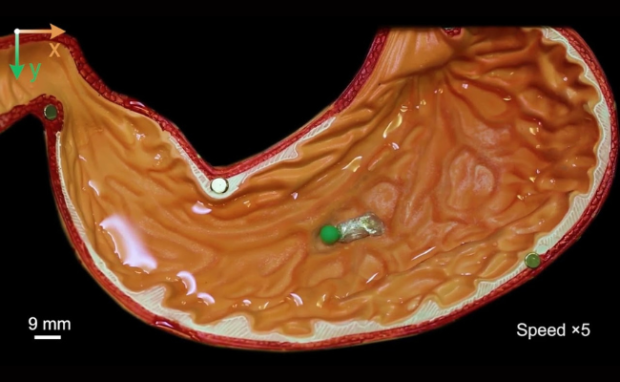Shape-Shifting Robot Shocks The World By Passing Through Cage
A team of Chinese researchers has created a robot that can transform into a solid and a liquid back and forth.
The scientists demonstrated its uncanny ability by keeping it in a cage. The LEGO man-shaped robot melted into a silver slurry and oozed out of the container.
Then, it flowed into a nearby mold and restored its earlier form. If the shape-shifting robot sounds familiar, it works like the T-1000 from Terminator 2!
How does the shape-shifting robot work?
Scientists have created a mini version of the T-1000 shape-shifting robot from Terminator 2. 🤖
While it looks more like a Lego figurine than a scary man-sized robot from the far-future, just like the T-1000 it can change to a liquid shape to move past obstacles. pic.twitter.com/8eLl4mTEXP
— Euronews Next (@euronewsnext) January 26, 2023
When you think of robots, images of humanoid machines come to mind. However, Engineer Changfeng Pan and his team wanted to push the boundaries of robotics.
They wanted a robot that could retain structural integrity and navigate tight and narrow spaces. Eventually, they gained inspiration from sea cucumbers and created a shape-shifting robot.
Lead researcher Pan explained to EurekAlert how it works. He and his team created a new phase-shifting material, a substance that can turn from solid to liquid and vice-versa.
They called it a “magnetoactive solid-liquid phase transitional machine.” The researchers made it by embedding magnetic particles in gallium.
Gallium has a low melting point of 29.8 °C or 85.64 °F and reacts to magnetic fields.
Senior author and mechanical engineer Carmel Majidi said the magnetic particles have two roles.
First, they allow the mixture to respond to alternating magnetic fields. The particles accumulate energy from magnetic fields, gaining heat and melting the gallium.
Second, the embedded particles enable the shape-shifting robot to move in response to a magnetic field.
Magnets have two poles: north and south. Magnets with opposite poles attract each other, but ones with the same poles repel each other.
Let us say the particles have a north pole. You could use a south pole magnetic field to attract the particles and the gallium to you.
In the cage experiment, the mold outside and the shape-shifting robot likely had opposite poles. Eventually, the robot entered the mold that cooled it back into a solid form.
What are its potential real-world applications?

Photo Credit: www.sciencealert.com
Ask anyone to name a shape-shifting robot, and they would likely name the T-1000 from Terminator 2. Yet, the Chinese researchers have better plans for their creation.
They wanted to find out if it could take out foreign objects in specific internal organs. Pan and his team constructed a model of a human stomach.
Their shape-shifting robot oozed into the model, wrapped around the object, and brought it outside. Then, it succeeded in doing the opposite by delivering an object into the stomach.
As a result, the team concluded that it could become useful in the medical field. For example, doctors may use the robot to take out a kidney stone instead of performing surgery.
Additionally, they could administer drugs without injections or intravenous (IV) bags. More importantly, it could eliminate the risks of invasive procedures.
The shape-shifting robot could also have industrial applications. What if it could melt into circuits or ooze into screw sockets and then solidify?
Then, it could join electrical parts without someone soldering them into place. Also, the robot could connect mechanical parts without needing someone to screw them together.
Related Articles
Conclusion
Researchers from China recently amazed the world with their shape-shifting robot. However, they acknowledge that it needs more improvement to have real-world applications.
For example, they cannot use pure gallium for medical purposes because it will stay liquid inside a person’s body.
Expect to see this robot in action soon. In October 2000, we had the Asimo robot that could barely walk. Nowadays, Boston Dynamics has one that does backflips!